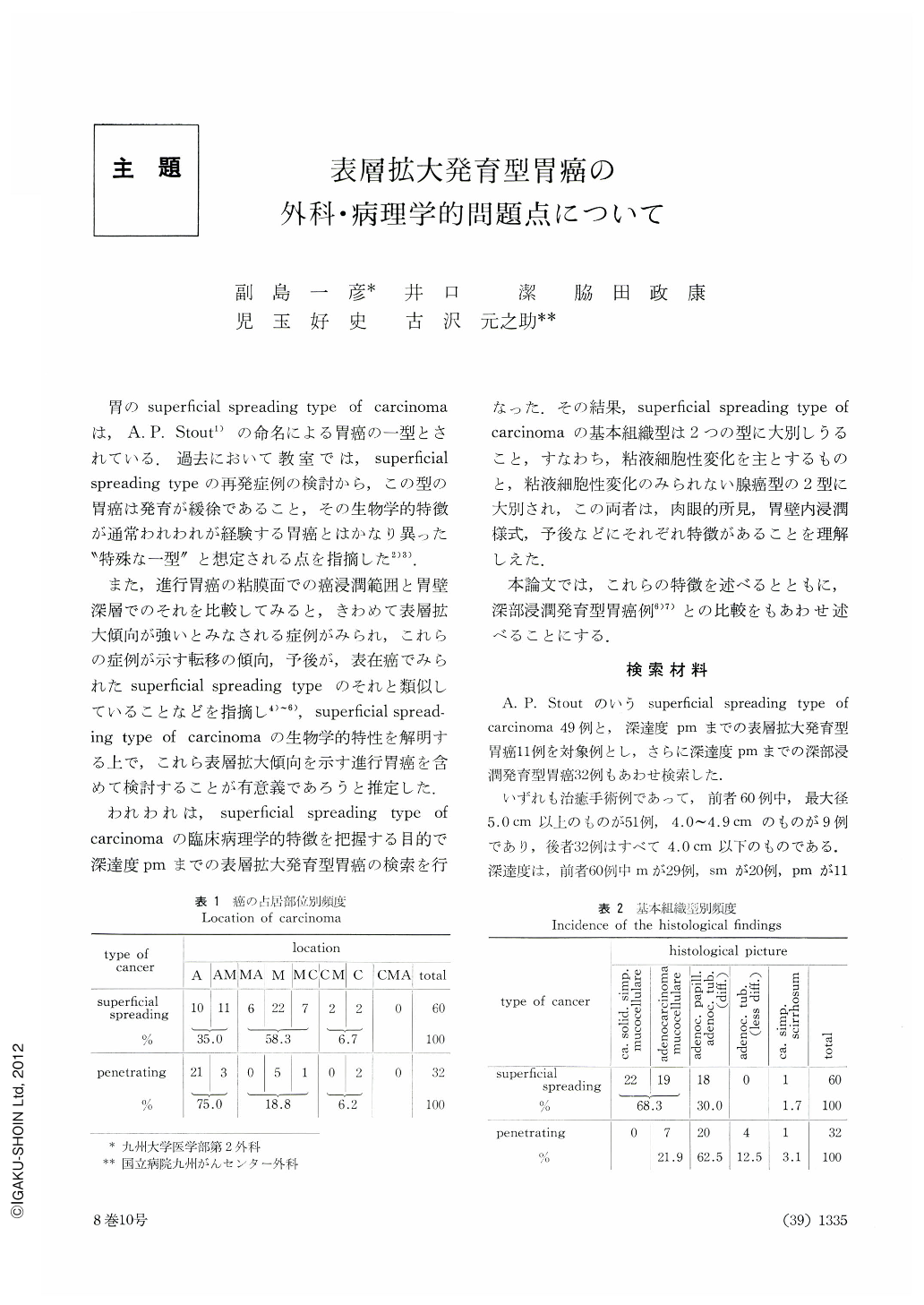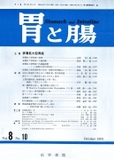Japanese
English
- 有料閲覧
- Abstract 文献概要
- 1ページ目 Look Inside
胃のsuperficial spreading type of carcinomaは,A. P. Stout1)の命名による胃癌の一型とされている.過去において教室では,superficial spreading typeの再発症例の検討から,この型の胃癌は発育が緩徐であること,その生物学的特徴が通常われわれが経験する胃癌とはかなり異った“特殊な一型”と想定される点を指摘した2)3).
また,進行胃癌の粘膜面での癌浸潤範囲と胃壁深層でのそれを比較してみると,きわめて表層拡大傾向が強いとみなされる症例がみられ,これらの症例が示す転移の傾向,予後が,表在癌でみられたsuperficial spreading typeのそれと類似していることなどを指摘し4)~6),superficial spreading type of carcinomaの生物学的特性を解明する上で,これら表層拡大傾向を示す進行胃癌を含めて検討することが有意義であろうと推定した.
Sixty cases of superficial spreading type cancer of the stomach with depth invasion limited to the pm are the subject of the present study for their clinicopathological characteristics. Also investigated and compared with them are surgically cured 32 cases out of those cancer that showed vertical deveopment and infiltration down to the pm.
Basic histological types of superficial spreading type are mainly divided into (1) cancer with chiefly mucus cell change (carcinoma solidum simplex mucocellulare and adenocarcinoma tubulare mucocellulare) and (2) tubular carcinoma without mucus cells (adenocarcinoma papillare and adenocacinoma tubulare). The first type can also be expressed as mucus cell type and the second, tubular carcinoma type. We have observed that clinico-pathological features of the second type closely resemble those of vertically developing type. Grossly, mucus cell type exhibits mostly depressed changes, while tubular carcinoma type shows most often elevated changes, even if limited to a small extent. Lymphatic invasion is most frequently seen in tubular carcinoma type, or ly (+).
The actual five-year-survival rate shows in superficial spreading type an overwhelmingly favorable percentage (97.8%). Accordingly, since superficial spreading type has a very high tendency to limit itself to m, it is of great importance to be well versed in determining the line of excision so as not to leave any cancer cells in the remaining stomach at the time of surgical intervention.

Copyright © 1973, Igaku-Shoin Ltd. All rights reserved.


